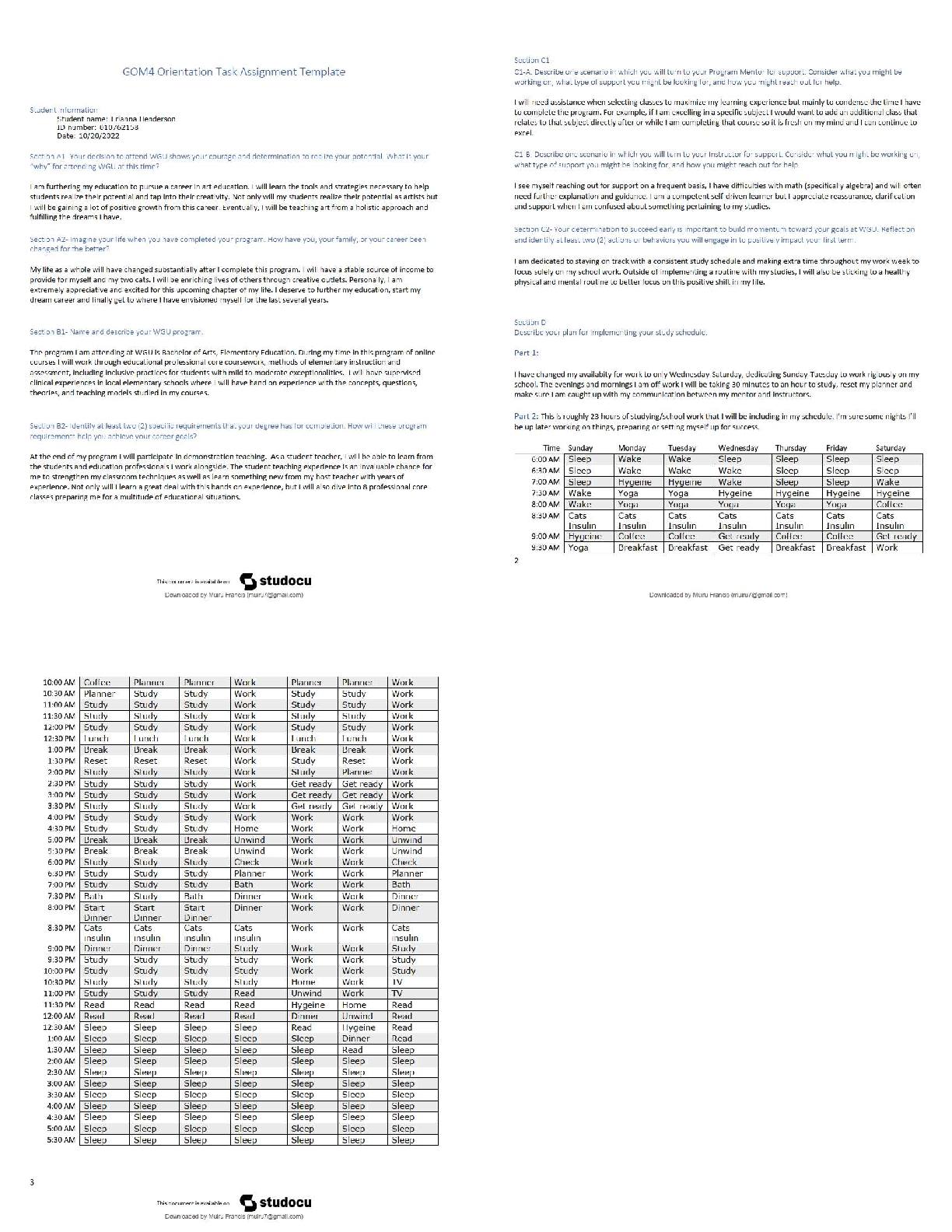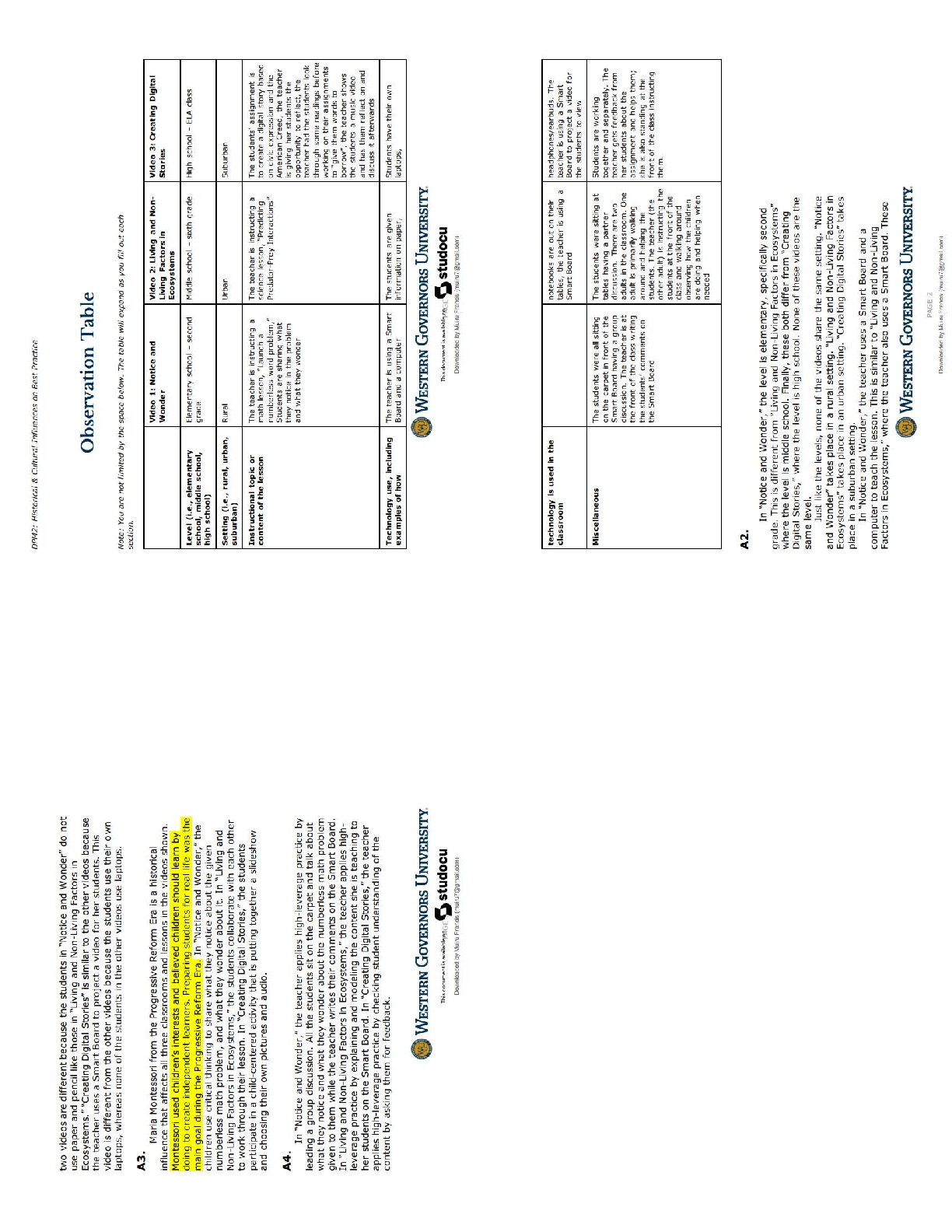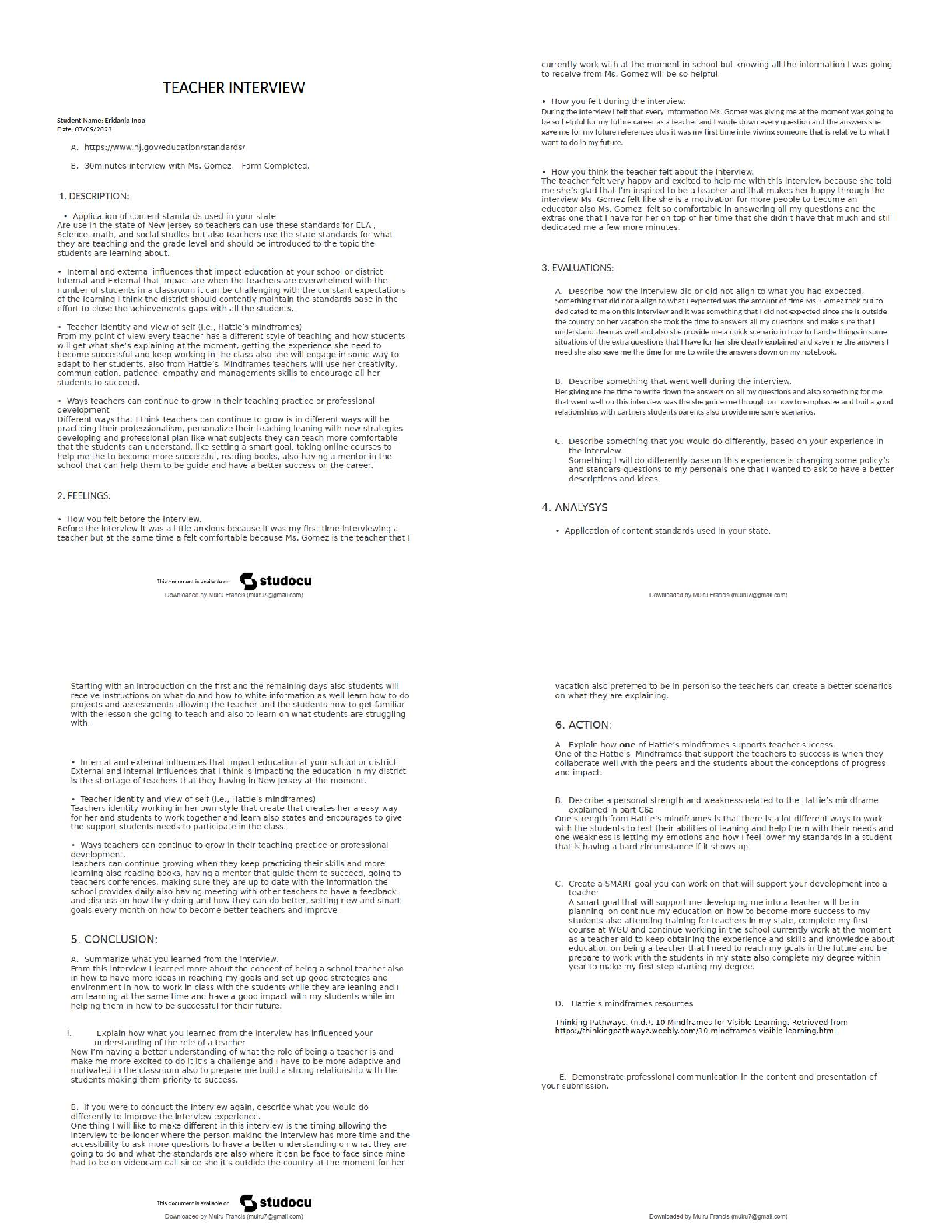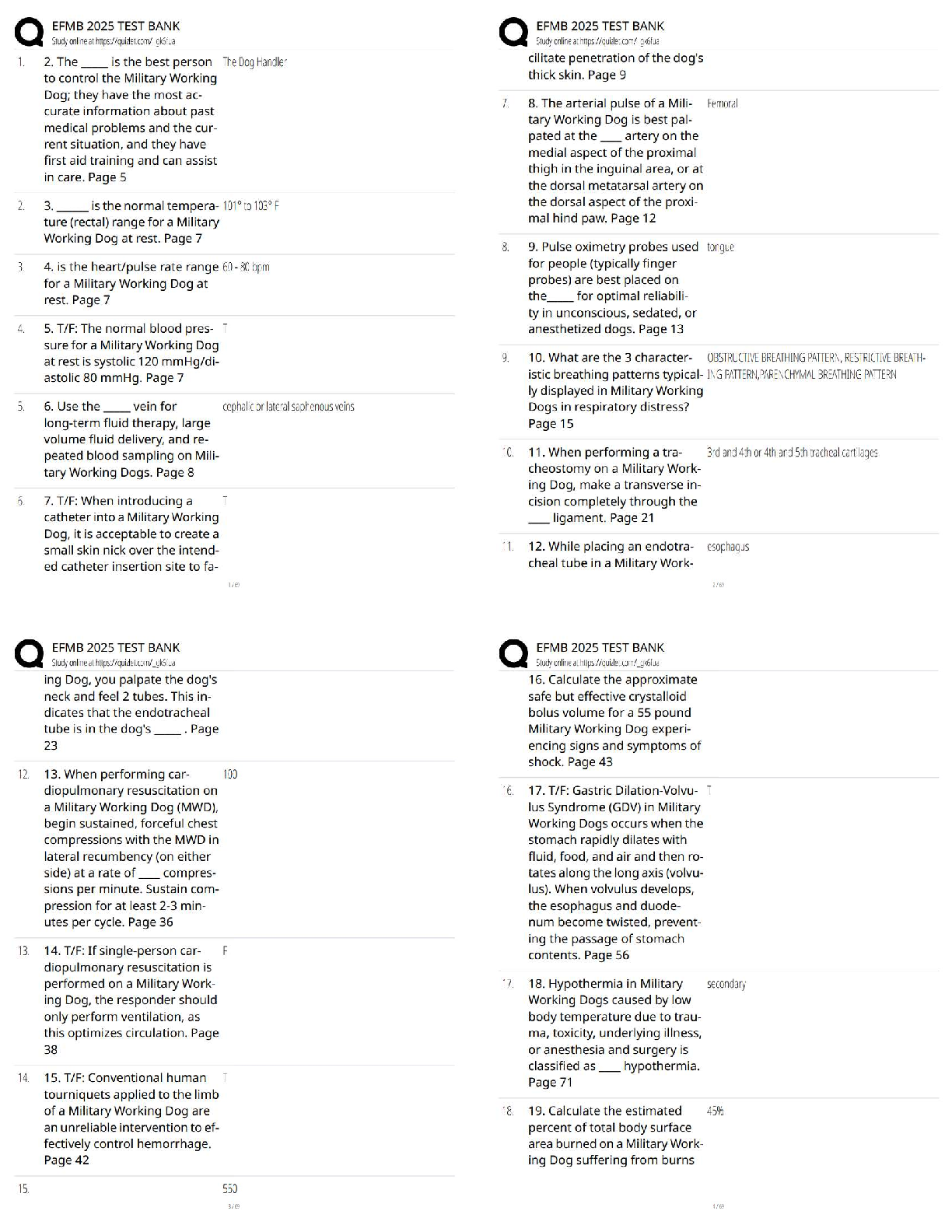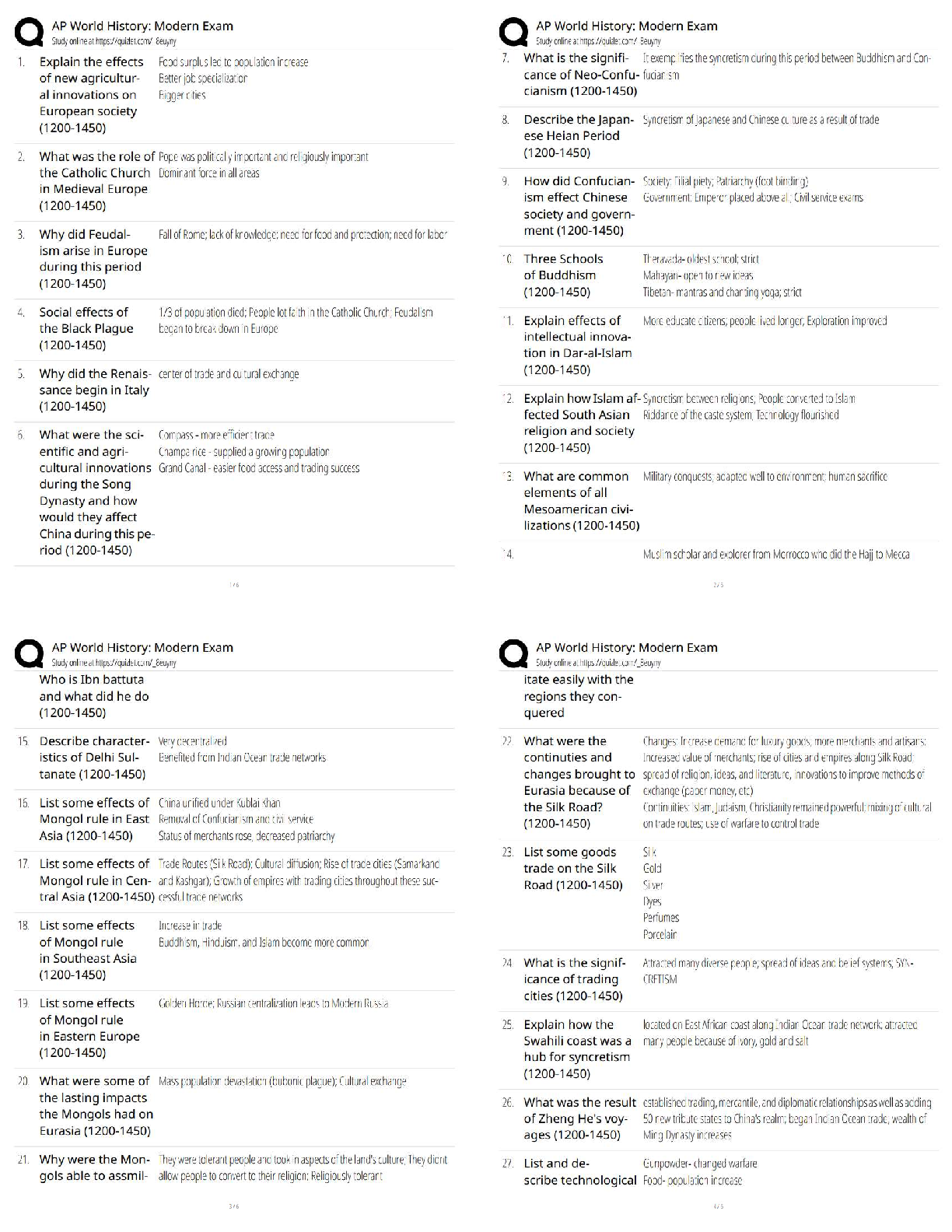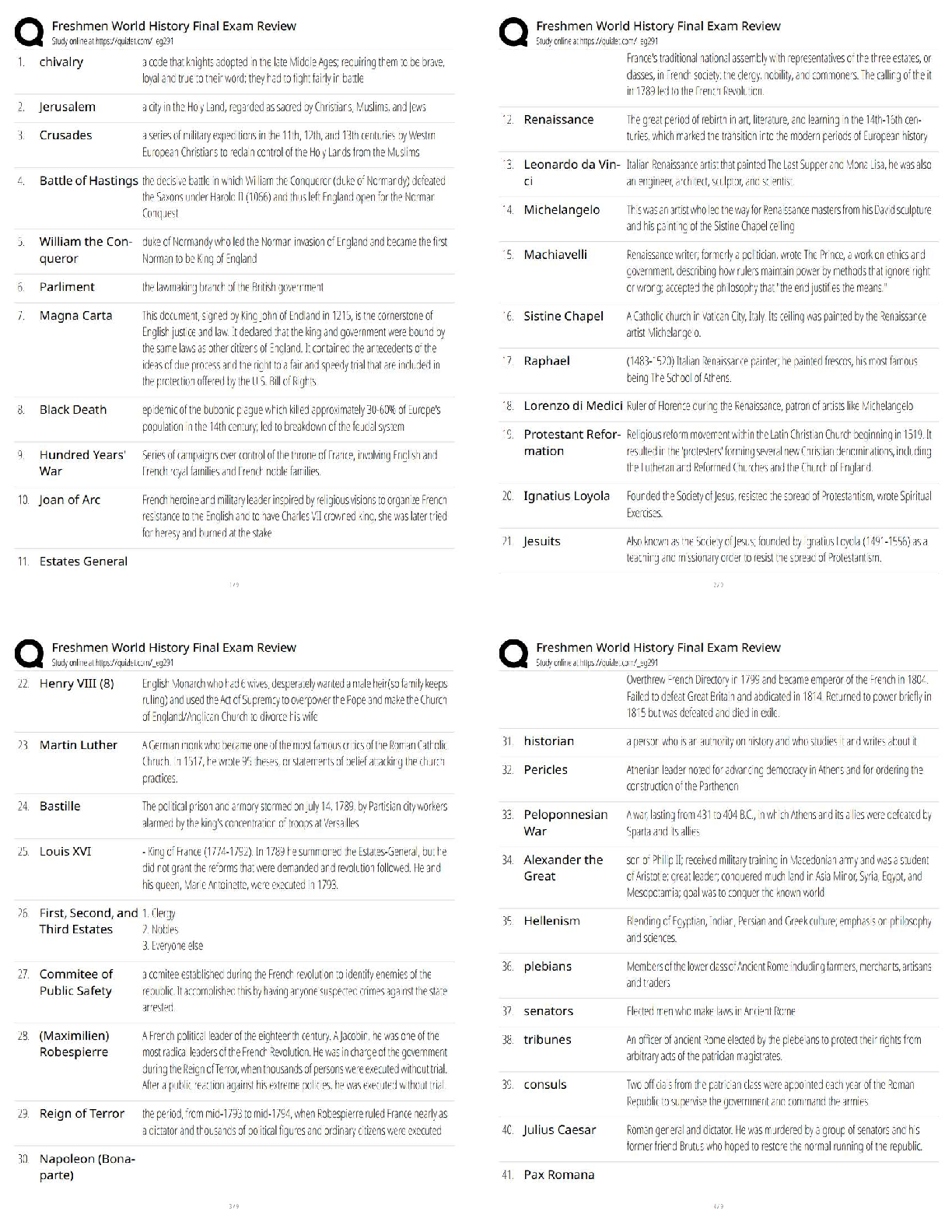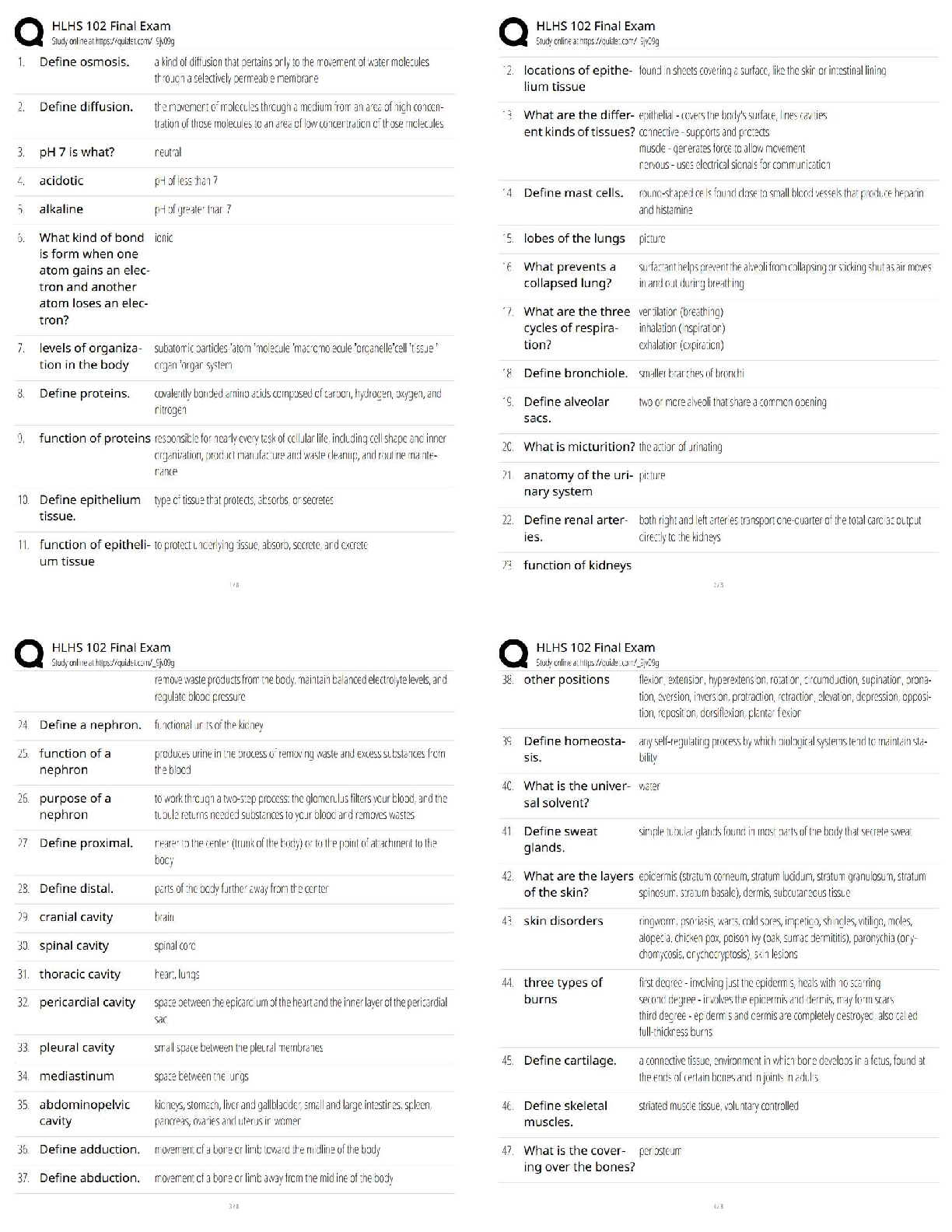*NURSING > QUESTIONS & ANSWERS > RN COMPREHENSIVE PRACTICE A EXAM REVIEW PROFESSIONAL NURSING CAPSTONE QUESTIONS AND ANSWERS (GRADED (All)
RN COMPREHENSIVE PRACTICE A EXAM REVIEW PROFESSIONAL NURSING CAPSTONE QUESTIONS AND ANSWERS (GRADED A)
Document Content and Description Below
RN Comp Online Practice ATI 1. A nurse is providing teaching about improving nutrition for a client who has MS. Which of the following instructions should to nurse include? "A speech pathologist wi ... ll be performing a swallowing study for you." is correct. The nurse should instruct the client that a swallowing study will be performed to determine the client's risk for aspiration due to difficulty swallowing, which is a manifestation of multiple sclerosis. "You should rest before eating a meal." is correct. The nurse should encourage the client to rest before each meal. Clients who have multiple sclerosis often report weakness and are easily fatigued. "You should restrict foods that are high in vitamin D." is incorrect. The nurse should instruct the client to maintain adequate vitamin D levels, because vitamin D deficiency is a risk factor for multiple sclerosis. "Reduce your intake of dietary fiber." is incorrect. The nurse should instruct the client to increase dietary fiber and fluids to decrease the risk of constipation, which is a manifestation of multiple sclerosis. "Thicken your beverages before drinking." is correct. The nurse should instruct the client that liquids should be thickened to reduce the risk of aspiration due to difficulty swallowing, which is a manifestation of multiple sclerosis. 2. An RN is planning care for a group of clients and is working with a LPN and an AP. Which of the following tasks should the RN delegate to the LPN? Collection of a stool specimen 3. MY ANSWER The nurse should delegate collection of a stool specimen to an AP because this task is within the AP's range of function. Preparation of a client's postoperative bed The nurse should delegate preparation of a client's postoperative bed to an AP because this task is within the AP's range of function. Preparation of a teaching plan about pneumonia The RN should prepare the teaching plan because creating a teaching plan is not within the scope of practice for an LPN or the range of function for an AP. Insertion of a nasogastric tube The nurse should delegate the insertion of a nasogastric tube to the LPN because this task is within the LPN's scope of practice. 4. A nurse is performing tracheostomy care for a client who is postoperative following a laryngectomy. Which of the following actions should the nurse take when suctioning the clients airway? Withdraw the catheter if the client begins coughing. Suctioning can initiate the cough reflex as it opens the airway further and allows for more effective removal of mucus. Apply suction for 10 seconds. 5. MY ANSWER The nurse should apply suction for only 5 to 15 seconds to minimize oxygen loss. Advance the catheter 2 cm (0.8 in) after resistance is met. Once resistance is met, the nurse should withdraw the catheter 1 to 2 cm (0.4 in to 0.8 in) to prevent damaging bronchial tissues. Use medical asepsis when performing the procedure. The nurse should use surgical asepsis when suctioning a newly created tracheostomy to reduce the risk for infection. 6. Anytime a patient is receiving TPN they will also receive blood glucose readings A nurse is caring for a client with a closed head injury. When pressure is applied to the client's nail beds, the client's eyes open and adduction of the arms with flexion of the elbows and wrists is noted. The client also moans with stimulation. What is this client's Glasgow Coma Score? Eye opening (E) - The best eye response, with responses ranging from 4 to 1 4 = Eye opening occurs spontaneously. 3 = Eye opening occurs secondary to voice. 2 = Eye opening occurs secondary to pain. 1 = Eye opening does not occur. Verbal (V) - The best verbal response, with responses ranging from 5 to 1 5 = Conversation is coherent and oriented. 4 = Conversation is incoherent and disoriented. 3 = Words are spoken, but inappropriately. 2 = Sounds are made, but no words. 1 = Vocalization does not occur. Motor (M) - The best motor response, with responses ranging from 6 to 1 6 = Commands are followed. 5 = Local reaction to pain occurs. 4 = There is a general withdrawal to pain. 3 = Decorticate posture (adduction of arms, flexion of elbows and wrists) is present. 2 = Decerebrate posture (abduction of arms, extension of elbows and wrists) is present. 1 = Motor response does not occur. Laboratory Values While lab values vary slightly according to the source, knowing an average range for the following common lab tests will be very helpful on to you when answering questions. Sodium 136-145 mEq/L Potassium 3.5-5.0 mEq/L Total Calcium 9.0-10.5 mg/dL Magnesium 1.3-2.1 mg/dL Phosphorus 3.0 –4.5 mg/dL BUN 10-20 mg/dL Creatinine 0.6 – 1.2mg/dL males, 0.5 – 1.1 mg/dL females Glucose 70 -105 mg/dL HgbA1c <6.5% WBC5,000-10,000/mm3 RBC Men 4.7-6.1 million/mm3 , Women 4.2-5.4 million/mm3 Hemoglobin Men 14-18g/100 mL, Women 12-16 g/100 mL Hematocrit Men 42-52%,Women 37-47% Platelet150,000-400,000/mm3 pH 7.35-7.45 pC02 35 to45 mm Hg p02 80-100 mmHg HCO3 21-26mmol/L Normal PT = 11-12.5 sec, Normal INR = 0.7-1.8 (Therapeutic INR 2-3) Normal PTT = 30-40 sec (Therapeutic PTT 1.5 – 2 x normal or control values) Digoxin 0.5 to 2.0ng/mL Lithium 0.8 to 1.4 mEq/L Dilantin 10-20 mcg/mL Theophylline 10 to 20mcg/mL Latex Allergies: Note that clients allergic to bananas, apricots, cherries, grapes, kiwis, passion fruit, avocados, chestnuts, tomatoes, and/or peaches ma [Show More]
Last updated: 3 years ago
Preview 1 out of 12 pages

Buy this document to get the full access instantly
Instant Download Access after purchase
Buy NowInstant download
We Accept:

Reviews( 0 )
$14.00
Can't find what you want? Try our AI powered Search
Document information
Connected school, study & course
About the document
Uploaded On
Dec 22, 2021
Number of pages
12
Written in
All
Additional information
This document has been written for:
Uploaded
Dec 22, 2021
Downloads
0
Views
214





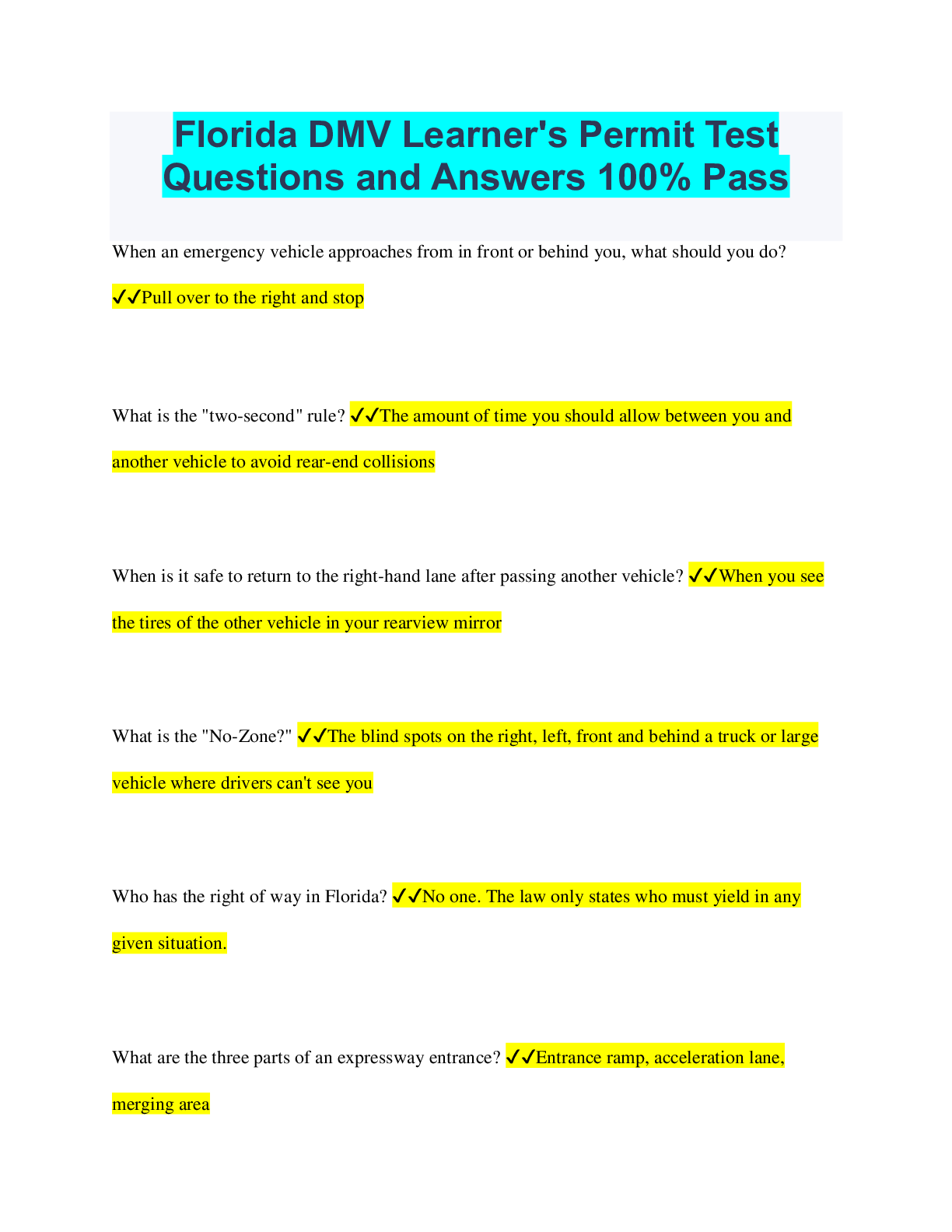
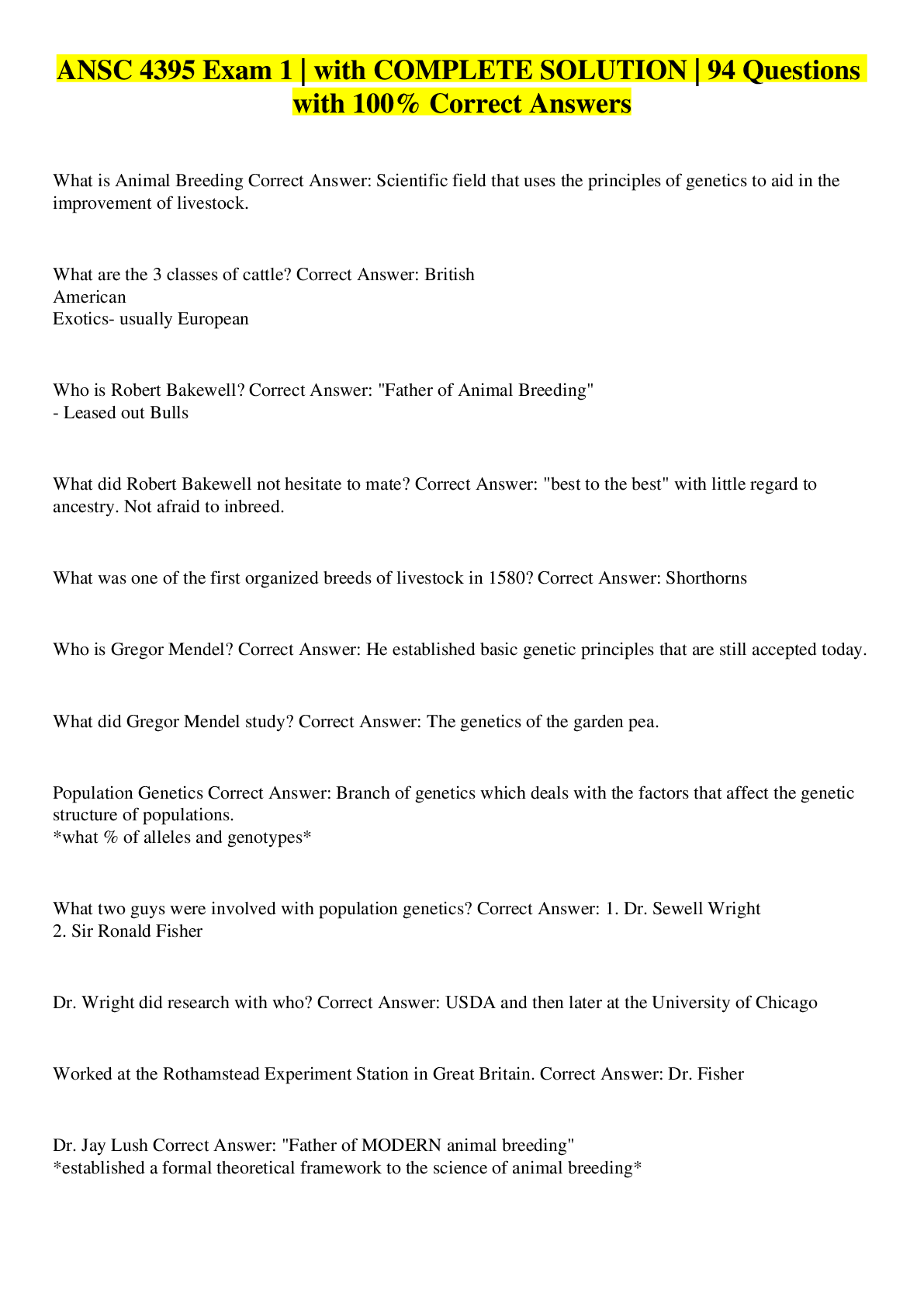

.png)





